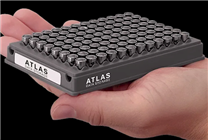NVIDIA’s Dominance in the AI Market: A Look Ahead
Summary:
- NVIDIA leads the AI graphics card market, boasting a market share of approximately 80%.
- Analysts predict NVIDIA will maintain a monopoly, holding 67% of the market by 2030.
- Competitors like AMD and Broadcom are expected to gain a foothold, but their prospects are limited compared to NVIDIA’s explosive growth.
On September 27, the AI market witnessed a powerful shift, with NVIDIA emerging as the clear leader over industry giants such as Microsoft, Google, and OpenAI. The company’s AI graphics processing units (GPUs) have not only driven remarkable performance improvements but have also propelled NVIDIA’s market valuation to a staggering $4.5 trillion.
NVIDIA’s Market Share
NVIDIA’s dominance is evident, with estimates of its market share varying between 80% to as high as 95% according to different analytical sources. A recent report from industry analysts indicates that NVIDIA commands a commanding 80% share in the AI segment. This level of control raises questions about how long NVIDIA can sustain its exceptional market position.
Future Projections
Speculations suggest that NVIDIA’s stronghold will extend well into the future. Predictions indicate that by 2030, the company will still command 67% of the AI graphics card market, suggesting a durable monopoly. This forecast is particularly compelling given the increasing total addressable market (TAM) for AI, projected to increase several-fold over the next five years. NVIDIA’s revenues are anticipated to continue their meteoric rise, with CEO Jensen Huang recently expressing optimism about achieving trillion-dollar revenue milestones.
Competitors in the Landscape
While NVIDIA reaps the majority of the market benefits, attention turns to its competitors. AMD emerges as a notable contender, yet experts caution against overly optimistic expectations. Predictions indicate that AMD’s market share may reach slightly above 4% by 2030, translating to an annual revenue of approximately $20 billion—up from about $6.3 billion this year.
AMD’s growth trajectory may not rival NVIDIA’s; in contrast, Broadcom appears to be carving out a niche focused on custom ASIC (Application-Specific Integrated Circuit) chips, rather than GPUs. Recent contracts, including a significant order from OpenAI, position Broadcom to benefit from a rise in demand for customized AI chips. Analysts estimate Broadcom could secure a 14% market share by 2030, expecting revenues to skyrocket to roughly $60 billion, significantly higher than its current $14.5 billion.
Conclusion
NVIDIA’s stronghold on the AI graphics card market showcases its unparalleled innovation and strategic positioning. With significant market share, financial prowess, and robust future projections, NVIDIA seems well-equipped to maintain its dominance for years to come. Though challengers like AMD and Broadcom are making strides, they face considerable hurdles in matching NVIDIA’s expansive growth and market influence.
As we analyze the evolving landscape of AI technology, it becomes increasingly clear that NVIDIA is not just a significant player; it is poised to define the industry’s future. The next decade may witness unprecedented advancements driven by NVIDIA’s innovations, with the company cementing its role as a powerhouse in artificial intelligence.








